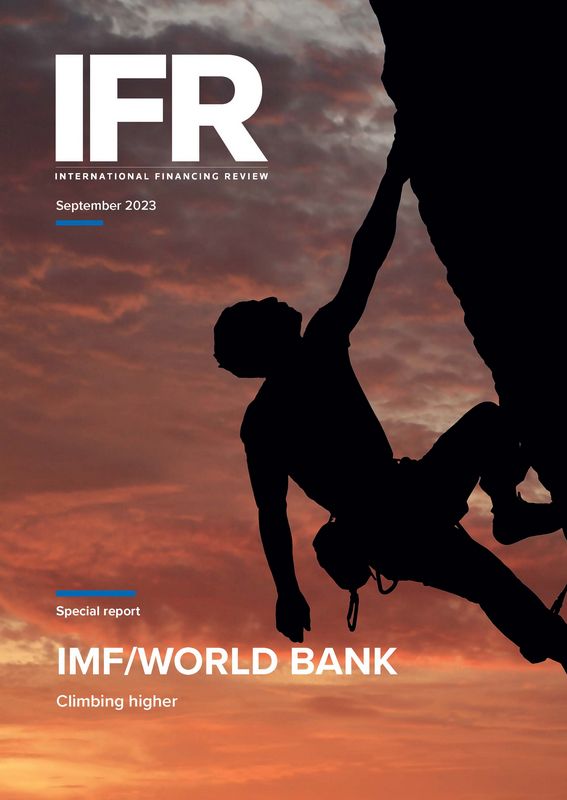The past three years have been ones of overlapping crises. From Covid to war in Ukraine through geopolitical upheaval to natural disasters, the strain on government finances, particularly in developing nations, has been climbing higher.
That these situations cannot be legislated for was brought closer to home in no small measure by September 8's earthquake in Morocco, with the World Bank-IMF annual meetings set to take place in Marrakech just a month later.
Around the world, public debt as a ratio to GDP soared during Covid-19, with the IMF expecting it to remain elevated for some time to come. As the backdrop evolved, so did the funding environment, with inflation rising and a period of ultra-low interest rates replaced by tighter financing conditions.
As rates were on the rise, so growth embarked on a downward path, with the IMF's baseline forecast from April predicting a drop to 2.8% in 2023 from 3.4% the previous year, before settling at 3% in 2024. While it is often the emerging economies that suffer the brunt of any downturn, advanced economies were expected to fare even worse, dropping from 2.7% in 2022 to 1.3% in 2023. And that was the fund's more optimistic view, with a 'plausible alternative scenario' seeing global growth declining to about 2.5% in 2023 with advanced economy growth falling below 1%.
While inflation has begun to fall back, it remains stubbornly high and thoughts are that it will not return to target until 2025. Policymakers will be faced with juggling elevated prices while attempting to maintain growth and preserving financial stability.
The temptation for many has been to assume more debt, although with the US dollar effective exchange rate soaring, interest repayments have mounted to such an extent that debt distress is always a real danger. A move away from traditional lending sources to include a number of diverse creditors has only served to exacerbate the potential ramifications.
Faced with such a scenario, it would be easy to fall into the trap of fearing there is no way out. But this is exactly where the likes of the World Bank and IMF step in, and today's situations are nothing they have not seen before.
In its mission statement, the World Bank mentions two goals: ending extreme poverty and promoting shared prosperity in a sustainable way. For its part, the IMF says it works to achieve sustainable growth and prosperity for its member countries by supporting economic policies that promote financial stability and monetary cooperation, which are essential to increase productivity, job creation and economic wellbeing.
Both are well versed in the steps that can and need to be taken to address the situation; both have a history of being able to engage with third parties to achieve success. With the mountains that need to be climbed appearing higher than ever, it will be a test of the pair's prowess to help those requiring assistance to navigate their way through. No one, however, could doubt their resolve.
To see the digital version of this report, please click here
To purchase printed copies or a PDF of this report, please email leonie.welss@lseg.com

